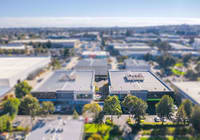
Successfully investing in a commercial property
Attractive returns and long lease terms are among the reasons many investors choose commercial property, but as with most investments buying these assets is not without risks, which first-time buyers need to be aware of, experts say.
“These two factors alone account for a lot of the interest of first-time commercial investors, but as with most things in life it is not that simple,” says former CBRE Melbourne retail director Mark Wizel, now managing director of Wizel Property Group.
Some of the advantages of investing in commercial property include lease terms of three to five and up to 10 years, depending on the type of property you buy, rental increases written into the lease, and tenants being responsible for most outgoings, he says.
“Commercial tenants have an interest in ensuring your property is well maintained as it reflects on their business, their ability to retain staff, to operate efficiently, to attract customers, etc.
Over the past 24-36 months, the rising cost of finance has had a material impact on the yields that investors for commercial properties are willing to accept, Wizel says.
“Yields generally for commercial properties priced between $1 million and $10 million currently sit within the 5.5 per cent to 7.5 per cent band,” he adds, noting there are always exceptions.
“When it comes to a place like Melbourne, if properties are being offered to the market in prime strips such as Church Street, Brighton or High Street in Armadale and are accompanied by a long term lease to a national tenant, then we are continually seeing investors willing to still part with their funds in return for a yield at or below 4 per cent.”
Looking back pre-pandemic to 2019, commercial yields were quite low – as low as 2 to 3 per cent for some strip retail.
Savills retail investment director Rick Silberman says first-time investors need to weigh up the risk against the security of a commercial property.
“A first commercial investment involves many different variables, and it’s important to understand these associated factors because getting the first one right is imperative to building momentum and allowing the investment journey to be an enjoyable one,” he says.
Pros and cons of commercial property investment
Contemplating investing in commercial property but don’t know where to start?
Here are some variables and fundamentals to consider, according to Savills NSW metropolitan sales senior executive David Hickey and Savills sales executive Selin Ince.
Pros
- The strong rate of return on capital invested. Commercial property generally provides a higher return on investment
- Secure income stream
- Typically, structured rental increases are included in lease agreements
- Longer lease periods. On average, a lease for a commercial property is anywhere from three to 10 years (and sometimes more), whereas average leases for residential are six months to one year.
- Leases are mostly transferrable
- The tenant is usually responsible for a property’s outgoings like council rates and water use
- Tenants normally add value. Hence, there is an incentive to make improvements that go hand in hand with raising the value of your commercial property. This may lead to a commercial property owner being able to charge higher rates to later tenants
- Greater choice of properties to suit a wide range of budgets
Cons
- Untenanted periods equal loss of income due to vacancy
- Difficulty repaying debt due to income reduction caused by a vacancy
- Fit-out contributions and incentives (rent-free periods)
- Broader economic conditions affecting the tenants’ ability to pay rent (economically vulnerable)
- The greatest hurdle for entry into the commercial property market is the upfront capital required, with lenders sometimes needing deposits double that of residential property
- Capital works required to upgrade the building. Facade, roof, services, and complying with BCA standards.
- Change of laws governing operating hours (for example, lockout laws)
- Capital gains tax and transaction costs
What to look for in your commercial investment
Location: Just like residential property, location is very important, says Wizel.
“Transport access – public and road – can make or break a business and therefore has a significant impact on tenant demand,” he says.
Parking is also very important, particularly in the retail sector where customers need to carry purchases to their cars. Retail businesses or those with a retail component also need exposure, so main-road frontage within an established commercial precinct can also be critical to the success of a business, he says.
Vacancy: Take into account how many vacant shops, offices, warehouses or factories are in the precinct you are looking at.
If there are many vacancies, it could mean finding another tenant – if you lose yours – could be difficult. If there are no vacancies, that is a good sign that business in the precinct is good and you are likely to be able to re-let your property quickly. Never buy with vacant possession unless you are sure you can find a tenant quickly, Wizel cautions.
The building: Seek a modern, attractive and well-maintained property that needs an absolute minimum of upkeep.
The tenant: Find out who the tenant is. How long has the tenant occupied the premises, the rent up to date (ask for an arrears report), what are the lease expiries – are they staggered or are they clustered?
The area: It is essential to learn about the local area. Things to consider include:
- What sort of growth projections are there?
- Is there a lot of new construction in the precinct?
- Are there government plans for new infrastructure?
- Is there a plan to rezone or revitalise the precinct?
- What are the characteristics of the local population? Is it a relatively wealthy demographic with a high per capita discretionary-spend profile?
Asset fundamentals: Understanding the fundamentals of each asset class and the associated market is key, says Herron Todd White associate director Edward Cox.
“For offices [that includes] being close to retail amenities, transport networks, adequate on-site car parking ratio, the level of natural lighting and functional floor plates/ tenancy areas.
“For retail [look for] good ingress and egress, exposure to passing vehicular and or foot traffic, tenancy mix, anchor tenant, good customer car parking ratio.
“For industrial [that means] having good access to major arterial roads, on-site access and manoeuvrability for large vehicles, clearance of warehouse/factory (low height will limit its marketability), having the right office-to-warehouse ratio and site coverage (is there adequate on-site manoeuvrability and hardstand).”
How to buy a commercial property?
Typically, commercial property is sold through an expression-of-interest campaign, auction or private sale. According to CBRE metro investments and development site sales director Jon Quayle, expressions of interest (EOI) and auctions are the most common methods, with EOIs allowing prospective buyers to submit usually non-binding confidential bids by a closing date with the seller.
From there, the seller selects one, or a shortlist of offers to continue negotiating with confidentially to then advance to a formal offer and contract with one selected purchaser.
How do auctions, EOIs and private sales work?
“EOIs allow buyers to dictate their preferred purchasing terms with the seller deciding if they are acceptable or negotiating a middle ground,” Quayle says.
Auctions are held in the same manner as with residential, in an open public setting, with all parties aware of the other bids.
Purchasing terms at an auction are usually dictated by the seller, rather than the buyer, Quayle says.
Sometimes, a seller may allow for some flexibility in the bidding and purchasing terms, which the auctioneer will announce and approve prior to the auction.
“Auction bids are legally binding, with the highest bidder required to enter into a contract with the seller immediately should the property meet the reserve price,” Quayle says.
With a private sale, the price the seller wants their property to sell for is set, and the real estate agent negotiates individually with prospective buyers to achieve a sale as close to this price as possible, says Savills NSW metropolitan sales senior executive David Hickey.
How to find a tenant
The objective of marketing your property is to spark interest and draw potential tenants to the opportunity, says Savills’ Ince.
Key tactics for finding a tenant include:
- Property signboards sitting front and centre to attract potential tenants
Brochures that showcase your property’s unique selling points and stunning photography
Digital advertising: Property listings on online platforms to target an extensive database of potential buyers
Print advertising: Extending your campaign into print can bring more page views to your listings via local, national and international publications and specialised targeted publications.
Quayle recommends engaging a leasing specialist who is active in the area and experienced in your particular type of asset.
“A good leasing agent not only knows what tenants are new to the area and actively looking but they also know the tenants who are already operating, when their lease expires and their requirements. So, if their current premises no longer meet their demands, they may be able to move them across to something bigger, smaller or more suitable such as your property,” he says.










